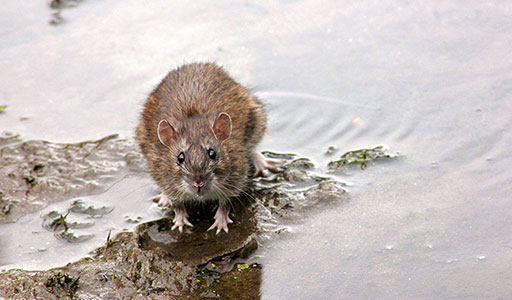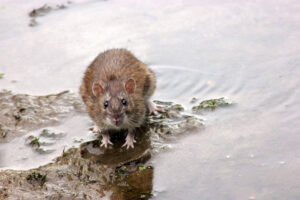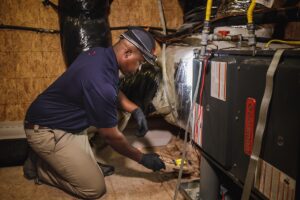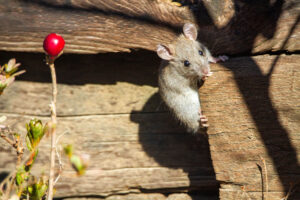Rodent Control
Do you need to get rid of rodents? We can help!

Rodent Removal Strategies
Rodent Problem

Signs a Rodent is on Your Property
Droppings are one of the first ways to discover an infestation in the home. However, different rodent feces can be similar in appearance, so it is important to be able to differentiate one from another. In addition, chewed items around your property may also indicate a rodent problem.

Dangers of Rodent Infestation
Rodents destroy property with their constant gnawing, as they chew through wooden structures and wires. This behavior can lead to electrical shorts and even devastating building fires. Often ridden with disease, rats spread pathogens through their feces and urine, as well as through bites and scratches. They also burrow, which frequently results in damaged structures and landscapes. Gardeners report significant losses at the hands of the rodents, as rats eat vegetables, nuts, and fruits.
Humane Rodent Removal & Control Strategies

Entry into property
Rodents frequently seek refuge inside warm homes, which provide shelter from potential predators and access to human foods. Both attics and garages are ideal nesting locations inside, while sheds and barns on private properties also provide adequate shelter for the pests.

Trapping & Removal
In order to get a rodent situation under control, we would need to develop a rodent control program. This program will deplete current population of rodents living in and around the home. This can be done with a discrete rodent bait station that placed around the exterior of the home. Most homes need anywhere from 2-5 bait stations that will kill off the current issue and help against future infestation.

Prevention & Exclusion
Maintaining high standards of sanitation helps reduce the possibility of rat infestation. Trash should be disposed of in sealed bins, floors and counters should be cleared of crumbs, and foods should be stored in rodent-proof containers. Finally, attics and yards should be regularly checked for rat activity. Points of entry larger than one-fourth of an inch in diameter must be sealed with wire, caulk, or other suitable materials.
Frequently Asked Questions
The most proven methods for deterring rodents without chemicals include proper sanitation and rodent-proof construction. Proper sanitation practices extend beyond simply sweeping floors, including:
- Reducing available shelter both inside and outside the home
- Keeping woodpiles away from foundations and off the ground
- Removing or modifying birdfeeders
- Securing food and pet food in airtight containers
Rodents are able to survive with limited food, shelter, and water. This is why sanitation efforts must be combined with exclusion tactics to successfully deter them from homes. Use rodent deterrents like the following:
- Make sure doors, windows, and screens fit tightly.
- Use a combination of steel wool and caulking to eliminate any openings.
- Install door sweeps.
The inspection will include ductwork, the attic/crawl space, roof, soffit, vents, and any other location that is vulnerable to allow these rodents into the home. From the inspection, the technician will be able to determine the exact species and where it is leaving and entering the home.









